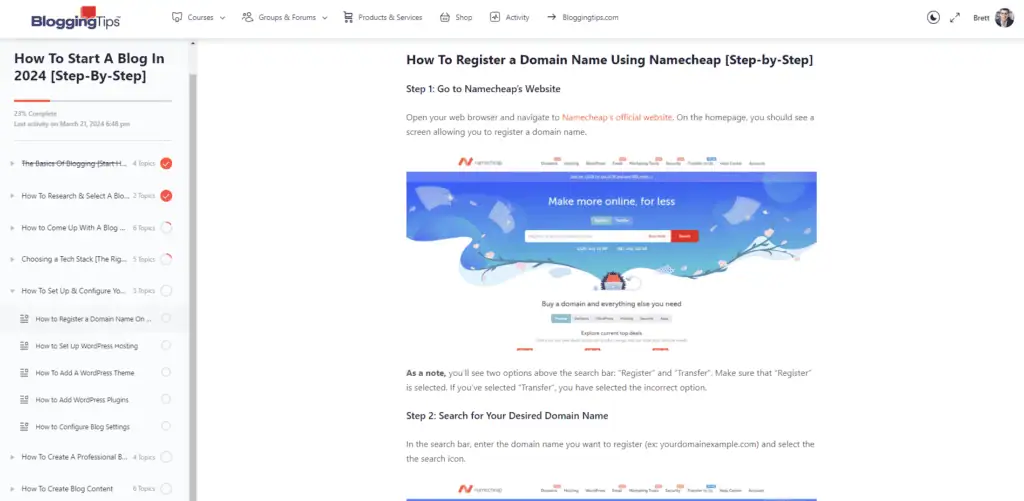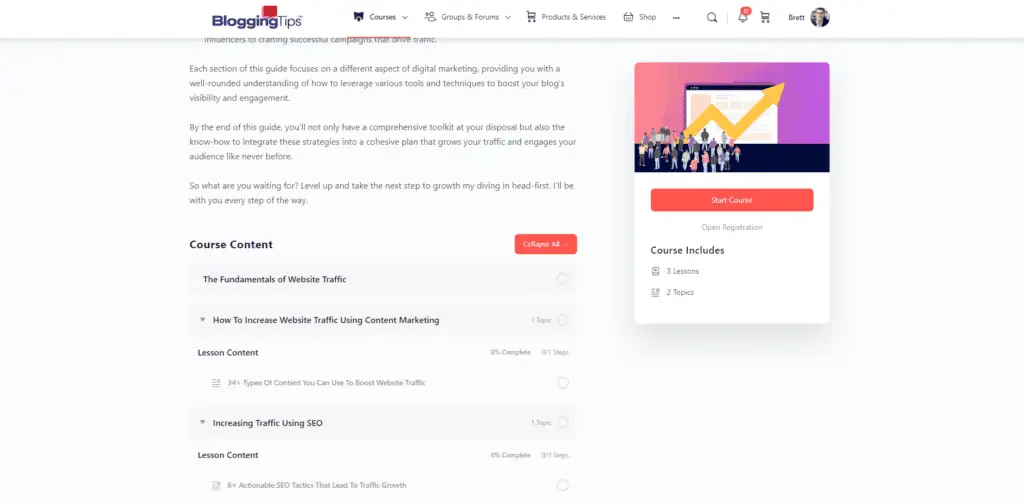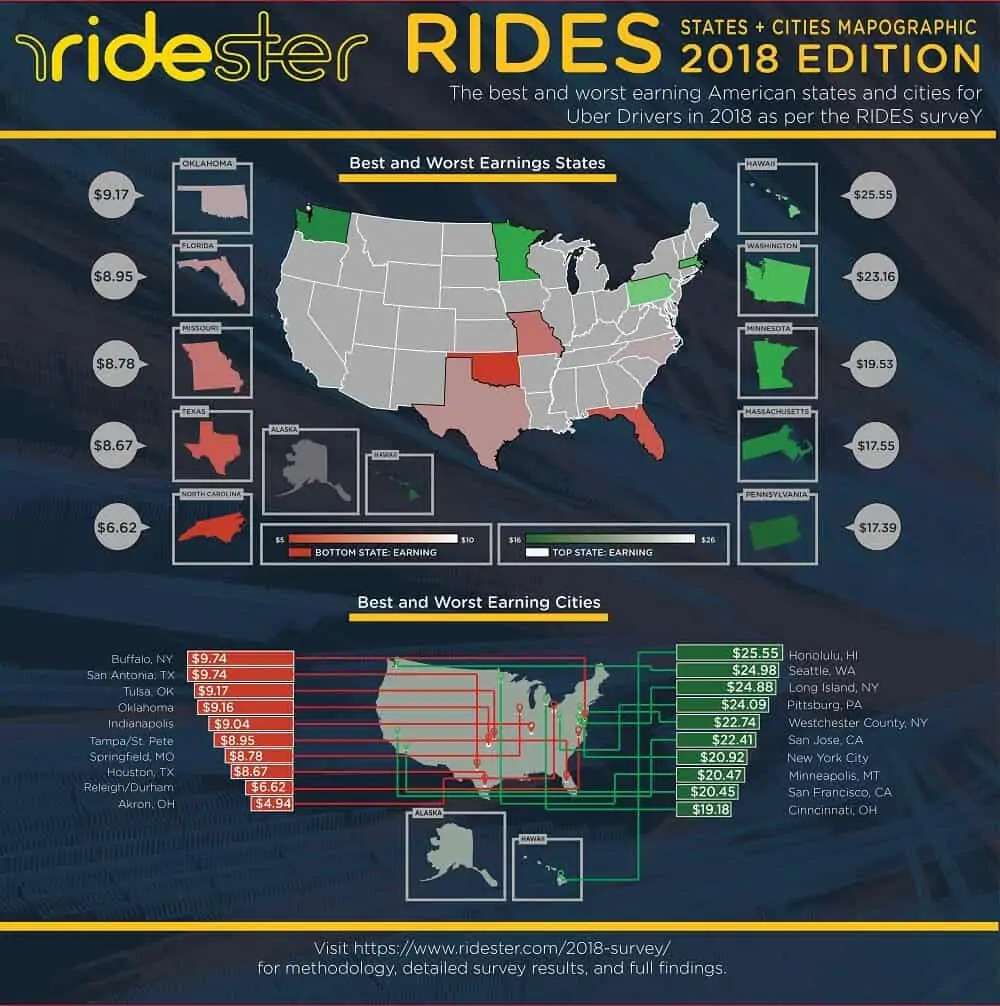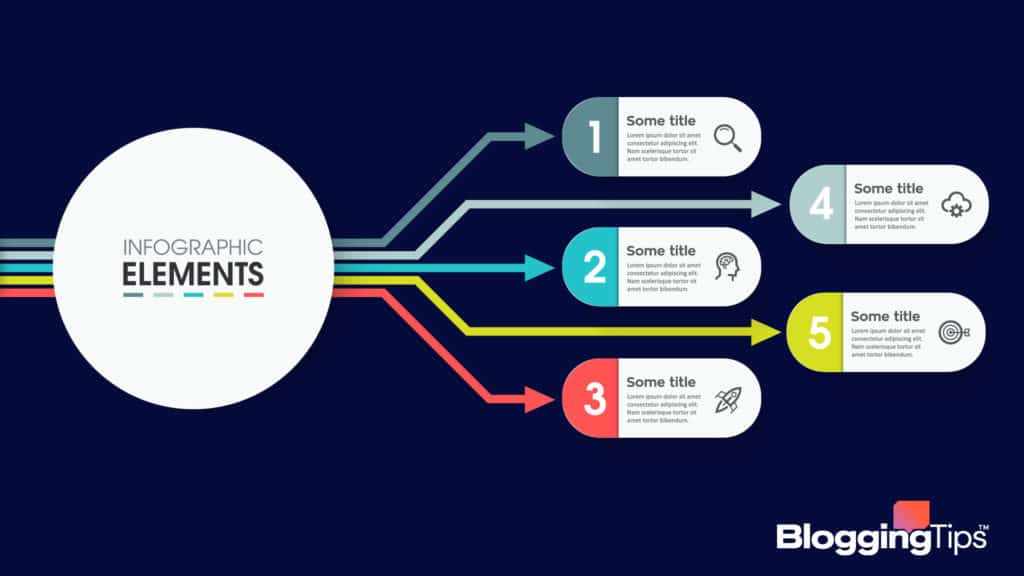34+ Types Of Content You Can Use To Boost Website Traffic

We’ve all struggled with coming up with blog post ideas and found ourselves stuck in writer’s block. Not to mention, we may have some blog content planned, but it may not get the interaction we hope for.
The average blogger would benefit from having an extensive resource file full of content ideas and frameworks. After all, you can just go through it and get the inspiration you need.
This is where we come in. We’ve previously discussed how to write a blog post, and now we’ll list 34 types of blog content that you can use on your own.
Related: 25+ blog post ideas to get your creative juices flowing
34 Types of Blog Content: At a Glance
- How-to Post
- Listicles
- Frequently Asked Questions (FAQs)
- Case Study
- Interview
- Beginner’s Guide
- Review
- Product Comparisons
- Industry News
- Infographic Post
- Problems and Solutions
- Guest Post
- Quiz
- Inspiring Post
- Profile
- Controversial Topic
- EBook
- Cheat Sheet
- Debate
- Survey or Poll
- Twitter Post
- Contest
- Presentation
- MP3
- Video Blog
- Screencast
- Webinar
- Behind-The-Scenes Content
- Memes
- Quotes
- Live Video
- Online Course
- Glossary
- Charity/Awareness Posts
Now let’s dive into what each is in detail.
1. How-to Post
How-to posts and tutorials are a very popular type of content that bloggers love to produce. This format offers a huge amount of value to readers very quickly but also ranks very well when produced correctly.
When producing how-to posts, make sure to present information quickly in clear, manageable steps. Also make sure to avoid using niche-specific jargon that a beginner might not understand. If you do, make sure to explain it well.
For example, I recently created a how-to guide showing readers how to register a domain name using Namecheap.

As you can see, I actually went through the process of doing that, taking screenshots along the way. Then I shared tips from my personal experience that helps readers avoid the same mistakes that I made while doing so.
The best tutorials also include hands-on experience like photos, videos, and expert insights that help walk readers through the process and add to the helpfulness of the post. Don’t forget that you’re showing somebody how to do something. Make the post as helpful as possible.
How-to guides and tutorials can focus on anything that educates a reader, but should be specific to your niche and something that your audience will find relevant.
Beauty gurus might focus on makeup tutorials, designers on design tips, and fitness coaches on exercise routines. The key is aligning your content with your niche and what your audience seeks.
The actual topics depend on your niche and target audience. But while you’re doing keyword research, make sure to look out for the “how to” keywords you uncover. These make great tutorials.
Examples of How-To Posts:
- Blog Checklist For A Successful Blog Setup
- How To Start A Blog: A Quick & Easy Guide [2022 Update]
- How To Change Twitter Username: Easy Steps To Take
2. Listicles
List articles (listicles for short) are another very popular type of content that websites love to produce. Despite their oftentimes clickbaity nature, when done correctly, they offer a lot of value to readers in a short amount of time.
Listicles can offer guidance on a wide range of topics, from content types (like this article) to the best keyword tracking tools, without requiring readers to connect complex ideas. They get to the point right away without a bunch of fluff.
The content of each listicle will be different, but overall, the format is similar:
- Engaging Title: Captures attention and clearly indicates the article’s content.
- Introduction: Briefly sets the context and importance of the list.
- Numbered or Bulleted Points: Organizes information for easy reading and reference.
- Informative Descriptions: Each point elaborates with valuable details or examples.
- Conclusion: Summarizes key takeaways and encourages further action or reflection.
- Visuals (Optional): Enhances understanding and engagement through relevant images or graphics.
Despite their simple structure, creating a standout list post requires effort. The last thing you want to do is create lists that are no different than all of the other ones from the competition. Take some time to find a unique angle to stand out from everybody else.
Examples of Checklist Posts:
- The 14 Best Lifestyle Blogs to Follow for Inspiration
- 9+ Best SERP Checkers For 2022 [Ranked & Reviewed]
3. Frequently Asked Questions (FAQs)
Answering common questions through detailed blog posts or a series can significantly boost your SEO and cater to beginners’ needs.
I don’t recommend that websites use this as a big part of their content strategy due to the rise of SGE and Google trying to become an “answer engine“, but it can work in some cases. For example, Investopedia has done a great job of ranking for “What is ___” terms in their Dictionary:

This approach helps them to not only rank for some of the most competitive terms in the finance niche, but also provides value to their users and helps them explain complicated topics to their readers by internally linking the term to the definition throughout their content.
Examples of FAQ Posts:
4. Case Study
Case studies are effective because they provide real-life examples and generate social proof. They’re also one of the easiest pieces of content to build since they allow you to essentially brag about yourself and the great results you achieve.
If you have a product or service to promote, select customers with positive experiences, reach out for their stories on how it benefited them, and craft a detailed case study. This method not only promotes your offerings but also builds credibility through genuine user testimonials.
Examples of Case Study Posts:
5. Interview
Interviewing bloggers, readers, or industry figures in various formats can deeply engage your audience, especially if the interviewees are individuals your readers admire. I think a great example of this is my Meet the Bloggers Interview Series.
For new bloggers, this approach offers the advantage of drawing on the experiences and expertise of others, reducing your own content creation burden.
I recently acquired an email newsletter and website called Hardly Hustle. The entire business model was built solely on the concept of interviewing other business owners.

After running the site for a while, I began to understand how this type of content can be used to tap the the “network effects” of other website and business owners.
When you give them exposure for their brand, it helps them. So in return, you can ask for a mention to their audience as well – which earns valuable exposure to an audience that is already interested in your niche.
Consider making it a series with a set of standard questions for each guest, streamlining the process and conserving your resources.
Ensure the questions are relevant to your readers’ interests, focusing on business insights, professional advice, and unique perspectives, especially when interviewing well-known personalities. Aim to ask interesting questions that provide fresh insights.
Examples of Interview Posts:
6. Beginner’s Guide
Beginner’s guides, sometimes also referred to as “Ultimate Guides“, offer in-depth dive into essential topics within a field, making them highly popular and beneficial for SEO.
Usually these comprehensively cover foundational topics. This type of post not only demonstrates your expertise but also remains useful and relevant for years, with only minor updates needed.
This type of post also provides a monetization opportunity through affiliate links to related products. Whether it’s video editing, kite flying, or thought leadership, writing a beginner’s guide is a smart way to engage and educate your audience while showcasing your knowledge.
I’m trying out a unique angle on these types of posts. You may have noticed that you’re reading one right now.

Instead of making 2,000+ word guides that are hard to read and digest, I’ve used an LMS system to build courses that function just like blog posts. However, each individual section is broken up into Lessons and Topics.
In theory, this makes digesting the content much easier because you’re doing so in small chunks at a time. And plus, you can always create a free account and save your progress – continuing where you left of at a later time.
Example of Beginner’s Guide Posts:
7. Review
If you want to establish yourself as a thought leader with an intimate knowledge of your industry, then consider reviewing products, services, or apps relevant to your niche on your blog.
This allows you to not only demonstrate your expertise, but also opens up a lucrative avenue for affiliate marketing, enabling you to earn commissions on purchases made through your reviews.
A fantastic example of a huge blog that does this well is Wirecutter, which was purchased by The New York Times in 2016 for more than $30 million.

It’s important to note that you should write only high-quality reviews if you do decide to take this route.
In the past, it was fairly easy to write a review and rank it just by writing some text about it. However, with Google’s release of it’s Reviews System, their AI now does a very good job of understanding whether or not you’ve actually used the product before.
They’re looking to promote content that clearly demonstrates first-hand-experience. So make sure to actually use the products you’re reviewing, and load them up with unique insights and real pictures and videos.
Examples of Review Posts:
8. Product Comparisons
Product comparison posts, while similar to reviews, differ mainly in their structure. These posts pit two or more products or services against each other to aid readers in making a purchase decision.
Unlike individual product reviews, comparisons tend to be less detailed but focus on specific features of each product, outlining their advantages and disadvantages. It’s also common to declare a winner at the end.
To make these posts more engaging, I highly suggest integrating the use of summary tables or infographics at the top, with hands-on experience in the form of photos or videos throughout the post.
Examples of Product Comparisons Posts:
9. Industry News
The news-type content format works particularly well with websites with writers that focus on breaking news, including local, company, industry trends, or significant events.
Larger blogs, especially those with a writing team, are well-suited for news content as they can quickly cover new developments and meet industry demands.
These posts can be concise news pieces or compilations of information with links to sources. Additionally, adding your commentary or opinion on the news can provide a unique perspective.
I’ve found that this type of post also does incredibly well even for small sites when promoted to an engaged audience via email.
I once surveyed 2,500 Uber drivers to see how much they were actually earning while driving. I then compared those numbers to the ones that Uber was advertising and found that my data showed that they actually earned much lower than that.
We wrote a post about our findings, visualized the data in a bunch of different infographics, and then sent it out to our email list.

The story became such big news that we ended up getting thousands of shares on social media, tons of website traffic to the article, and hundreds of links to the article from high-authority sites like The New York Times, The Guardian, Vice, and Mashable, just to name a few.
Examples of Industry News Posts:
11. Guest Post
Guest posts offer a fantastic opportunity to diversify your content without extra work. Inviting guest writers, whether they’re fellow bloggers or experts in your niche, introduces fresh perspectives to your audience and gives you a writing break.
It’s also a way to get featured on other websites, too. I’m a guest contributor on multiple websites, some of which are even paid opportunities that pay me hundreds of dollars per post that I write.
A word of warning here though… if you plan to feature guest posts regularly, it’s wise to establish clear content guidelines for your guest contributors. This is a helpful way to leverage another person’s audience, but also an SEO tactic that is widely abused as an easy way for writers to get free in-content links back to their sites.
If you offer too many guest posts on your own blog, especially if they link out to spammy websites, you risk getting penalized for unnatural outgoing links on your site.
Examples of Guest Posts:
10. Infographic Post
Infographics, those eye-catching visual summaries I’m sure you’ve seen many times before, remain valuable despite a dip in their popularity in recent years.
I still believe them to be an excellent for generating shares and backlinks even though they’re a bit overused.

With the recent rise of DIY graphic design tools like Canva and Venngage (and even dedicated infographic-making software) creating an infographic has never been easier.
If you’re looking for inspiration, consider formats like charts, lists, or myths versus facts.
Examples of Infographic Posts:
11. Problems and Solutions
Problems and mistakes naturally capture attention, sparking curiosity and engagement. By highlighting common errors your readers might be making and offering solutions, you not only provide value but also build interest.
Creating lists of “dos and don’ts” can be especially effective. Topics like vetting guest bloggers, improving lean body mass, or enhancing lead generation strategies can serve as practical examples for your audience, guiding them towards better practices.
Examples of Problems and Solutions Posts:
- How to Fix the ‘Your Connection Is Not Private’ Error
- How To Fix The “Error Establishing A Database Connection” Error
13. Quiz
For an engaging and enjoyable post idea, consider creating a quiz. This interactive format not only entertains your audience but also lets you gather important insights and data.
And as Buzzfeed has learned, this format can also go viral on social media very quickly. In fact, the quizzes have become so successful for the company made a pivot in 2023 to include more quizzes as a large portion of their content.

Remember to include social sharing options and a call to action to maximize participation. Plus, if you’re using WordPress, there are plenty of easy-to-use plugins that allow you to make a Buzzfeed-style quiz of your own.
Example of Quiz Posts:
14. Inspiring Post
Sharing success stories is a powerful way to inspire change and motivation among your readers. These narratives make goals seem attainable, providing the encouragement people often need.
The key lies in selecting a story that captivates and resonates. The goal is to make your audience feel the story, not just read it. It should really pull at their heartstrings and inspire them to share, save, or comment on the post.
Popular topics I’ve seen work well in the past include achieving a milestone with a blog, a pivotal moment in a reader’s life, a personal triumph, an underdog’s victory, or any anything related to personal change or accomplishment.
Examples of Inspiring Posts:
- Types Of Blogs That Make Money
- Travel Blogs: Definition, Types, Income & 25 Examples
- Survival Blogs: Definition, Types, Income & 25 Examples
15. Controversial Topic
Along those same lines are posts about controversial topics. These draw attention, clicks, and shares due to the drama they stir.
Writing these posts is straightforward if you’re brave enough to express unpopular opinions. Simply choose a contentious subject you’re passionate about, perform keyword research for optimization, and consider adding sarcasm for effect.
However, be cautious with your language as discussions can become intense. Opt for this blog type when you’re ready to make a bold statement or offer a provocative perspective on issues like gun control or euthanasia.
Example of Controversial Topic Posts:
16. Profile
Profile blog posts tell the story of an individual, often focusing on celebrities, customers, or rising stars. These posts aim to provide a detailed biography, including links for more information.
Highlight what makes them notable, the reasons for their fame, your rationale for choosing them, and their key achievements. This type of information does particularly well with celebrities and athletes.
Emphasize intriguing, lesser-known facts about their lives. For instance, showcasing a customer who dramatically improved their life through your fitness program can effectively promote your digital product.
However, only produce these types of posts if you’re actually verifying the information you’re writing about. As part of the Helpful Content Update, some sites producing incorrect information about celebrities and the net worth of popular figures were manually deindexed by Google’s spam team:
Someone sent me this purely AI generated content site a couple weeks back, as it was receiving traffic.
— Lily Ray 😏 (@lilyraynyc) March 9, 2024
Typical site writing about all the [celebrity] + [net worth], [height], [weight] combos. With overwhelming ads everywhere (so much Temu 😩).
But also sprinkling in the US… pic.twitter.com/IvzTlIjxz8
That was your one warning. DON’T go and create a ton of these types of articles using AI. It won’t work, and it will catch up to you.
Example of Profile Posts:
17. Ebooks
Considering adding downloadable content? Creating an eBook in PDF format is not only a great way to gain email subscribers but also a low-cost way to make a digital product with very high profit margins.
Downloadable content is great because you can use it to drive sales or even as a free lead magnet that you give away in exchange for an optin and email newsletter.
If the idea of writing a book seems daunting, remember that your eBook doesn’t need entirely new content. You can compile existing blog posts, email newsletters, notes, and other resources. Sprinkle in some exclusive bonus content, and you’re set.
Easy Ways to Create an Ebook:
18. Cheat Sheet
A cheat sheet offers a concise, handy reference on specific topics, serving both beginners and professionals.
The key to creating effective cheat sheets is brevity—direct and to-the-point content. Rather than delving into details, gather essential information into a well-structured PDF.
For instance, a popular cheat sheet type is one that provides conversion tables for common cooking measurements.
Or there’s our Ultimate HTML Cheat Sheet For Beginners that offers popular HTML code snippets to help website owners quickly get the code they need:

19. Surveys and Polls
Surveys and polls are dynamic blog post formats that enable direct reader engagement. For blogs with an engaged audience, they’re invaluable for gaining insights, guiding content direction, and informing product choices.
Sharing results can boost social shares significantly. Polls ask a question with set answer options, while surveys offer a mix of multiple-choice, open-ended, and fill-in-the-blank questions.
Tools like Typeform and various WordPress plugins make implementation straightforward.
Example of Survey or Poll Posts:
20. Debates
Starting a debate is an engaging blog idea that involves your readers in a thought-provoking discussion. It’s best suited for blogs with an active audience, so it may not be ideal for newcomers.
Present your viewpoint on a topic, explore various perspectives, and encourage your readers to contribute their thoughts. Share your stance and reasoning. After the discussion winds down, consider closing comments and summarizing the key points in a follow-up post.
This is more of a content format for social media, but it can be used anywhere on a blog. Generally though, you’ll find this type of thing to be most popular on Twitter.
This poll is over, not as many votes as I'd expect, I thought it would get 1,000 more – but anyway, some data for @searchliaison https://t.co/b9ityHspUj
— Barry Schwartz (@rustybrick) December 21, 2023
Example of Debate Posts:
21. Twitter Post
For a mix of informative and entertaining content, consider creating blog posts centered around Twitter conversations. These “what people are saying” posts are straightforward to compile, focusing on trending topics.
Embed 20+ relevant tweets into your blog, using the actual embedded content feature rather than screenshots. Add your insights or commentary on the discussion after that.
This format works well for covering Twitter campaigns or any topic that’s gaining attention on the platform. I don’t use them but I have seen this format used very heavily especially in the entertainment industry.
22. Contest
To engage your audience or attract new followers, introduce a contest or competition on your blog. I’ve had great success while running Facebook contests in the past.
While straightforward for most blogs, this approach necessitates some investment or sponsorship to ensure appealing prizes. Contests can also align with your brand’s needs.
For instance, a photography blog could host a competition inviting readers to submit their best photos, from which the top ten and a winner are selected.
23. Presentations
Creating a blog post featuring a PowerPoint presentation or slideshow is an effective way to deliver high-quality, visually appealing content. It’s convenient, especially if you’re repurposing existing materials.
Consumer presentation software like PowerPoint (Windows), Productivity Office (Mac), and online platforms like Canva and Adobe Express make creating this type of content incredibly sipml.
Once completed, upload them to SlideShare, a valuable resource for both sharing and finding inspiration. You can publish these online or embed them in your blog posts, and provide context by detailing their topics, presentation dates, and locations, if applicable.
Examples of Presentation Posts:
24. Video Blog
Known as vlogging, incorporating video content into your blog or hosting it on streaming services like like YouTube can create a stronger, more personal connection with your audience.

Many social media algorithms favor video content, allowing for broader reach with minimal effort. Vlogging also eliminates the need for traditional content creation steps like writing, editing, and formatting, though comfort in front of the camera is a must.
However, be aware that unlike standard content creation, the expectation from bloggers is increased engagement and consistent content.
While the content on a website can be fairly evergreen, with video, the audiences typically expect new videos to be released far more often.
Example of Video Blog Posts:
24. Podcasts
If video creation isn’t your forte, consider launching podcast.
This format has surged in popularity in recent years, appealing to a broad audience with diverse interests. Podcast content can range from comedy to in-depth literary discussions, allowing for great flexibility in topics.
It’s fairly easy to launch a podcast. There’s not much you need aside from a high-quality microphone, editing software, and a hosting platform.
As your podcast audience expands, ensure it’s easily accessible by hosting it on platforms like iTunes or Stitcher, which can help increase your subscriber count.
Example of MP3 Audio Posts:
26. Screencast
Screencasts, or screen recordings often paired with voice-overs, guide viewers through processes in an easily digestible visual format.
As long as you have some type of screen recording software, they’re straightforward to create, requiring roughly 30 minutes of editing after filming.
Tools like TechSmith facilitate the creation of screencasts, which can be shared on your blog and YouTube. This format is perfect for feature reviews, product tutorials, setting up software like Windows, and more.
Examples of Screencast Posts:
27. Webinars
Webinars, often pre-recorded rather than live, are a valuable addition to content marketing strategies. Offering free webinar access as an incentive for joining your email list can enhance engagement.
Additionally, providing supplementary materials, such as downloadable slideshows, adds further value for your audience. I’ve seen this download strategy used time and time again for successful lead generation.
Related Tools for Making Great Webinars:
28. Behind-The-Scenes Content
Offer your readers an intimate glimpse into your life and business with a behind-the-scenes post. This approach allows your audience to virtually shadow your daily activities, fostering both information sharing and a deeper personal connection.
You don’t have to disclose sensitive information; simple insights like your morning routine, income reports, top tips, photos of your office, or video clips of your work process can significantly engage your readers.
Examples of Behind-The-Scenes Content Posts:
29. Memes
Discussing viral content isn’t complete without mentioning memes and GIFs, which add a playful dimension to your posts, enhancing engagement and shareability.
First, consider if memes align with your brand’s tone. You can tap into industry-specific humor to create memes using a generator or integrate popular memes and GIFs relevant to your niche.
However, be mindful that GIFs, being short videos, can slow down your page’s loading speed, so use them sparingly.
Examples of Memes: This Could Have Been an Email Meme
30. Quotes
Quotes offer a simple yet effective way to share diverse voices within your content. Whether insightful, inspirational, humorous, or quirky, ensure they resonate with your niche. Present them as text accompanied by photos of the quoted individuals or stylishly within graphics.
Examples of Quote Posts:
31. Live Video
Livestreaming offers unparalleled engagement by allowing real-time interaction with your audience. Unlike webinars, live videos have a more relaxed, informal vibe, letting you connect more personally.
Platforms like YouTube, Facebook, Twitch, and Instagram provide the tools needed to host a livestream, making it easy to reach your viewers wherever they are.
Examples of Live Video Posts:
32. Online Courses

An online course is a detailed content format designed to teach a topic or skill. It can be delivered for free through blogging platforms, email, or as a downloadable PDF. Courses may feature a mix of formats like written material, voice-overs, and videos.
To complement your course, consider publishing individual blog posts covering specific course topics. Conclude with a summary post that links to all previous content, offering additional tips and insights.
Examples of Online Course Posts:
33. Glossary
Publishing a glossary is a smart move for SEO, allowing you to incorporate various keywords naturally.
These posts serve readers across all knowledge levels by defining field-specific terms, benefiting both beginners and those needing a refresher. If your content often includes specialized jargon, a glossary post can clarify these concepts.
Start by identifying the most searched terms in your field, potentially gathering input through questionnaires or polls with your audience. This strategy not only creates valuable cornerstone content but also has the potential to attract backlinks and shares.
Examples of Glossary Posts:
34. Charity/Awareness Posts
Highlighting a cause or charity you’re passionate about in a blog post not only supports a good initiative but also casts your brand in a favorable light. This approach aligns your values with your content, potentially connecting with your niche.
For instance, health bloggers might advocate for new cancer research, while tech bloggers could support initiatives like One Laptop Per Child, demonstrating commitment to their fields and broader social issues.
Examples of Charity/Awareness Posts:
Hit Publish!
Now that you’ve got tons of new content and content marketing ideas, you’ll be hitting that button more often!
Just choose the content ideas that suit your blog niche and style, and start writing and pumping quality content! Finally, don’t be afraid to make mistakes because that’s the only way to learn.


Responses